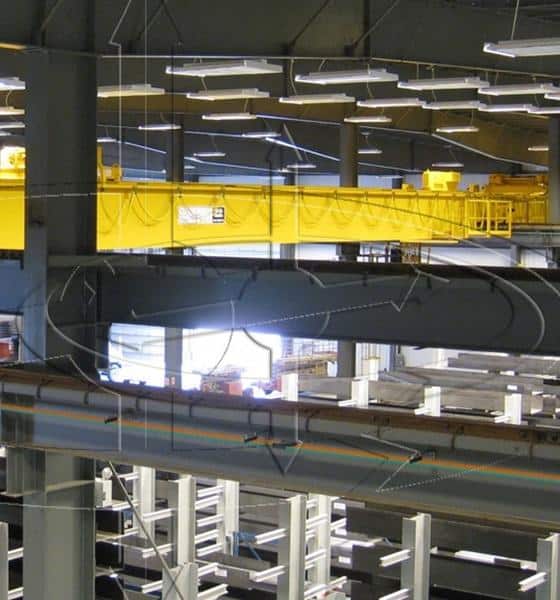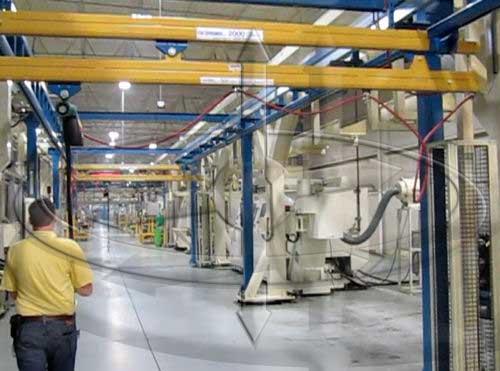
Gorbel Telescoping Bridge Cranes with Cable …
Gorbel Telescoping Bridge Cranes with Cable Carrier, and J.D. Neuhaus Air Chain Hoists!
First, I want to thank all of you that have signed up for, and sending me comments on our Newsletters. The sales and service team here at Engineered Lifting Systems pride ourselves on being able to provide solutions that meet our customer’s expectations. Once in a while we are faced with several unique requests that get balled up into one application; such was the case with this case study.

Click here for the system view PDF.
The customer (a large automotive parts manufacturer) had been searching nationwide for a crane system that provided everything they wanted. The crane system needed to operate in between two sets of automated machines, and have the ability to extend into the machine to pull parts for inspection. Some of these parts can be heavy, up to 400 lbs, and all of the parts need careful handling so J.D. Neuhaus “MINI 250” air chain hoists were chosen because of the precision “spotting” control they have available. The ability to extend out and retract has become pretty common using a Gorbel Telescoping Bridge Crane on a Work Station Crane System. Things got a little hairy when we needed three cranes on the runway, with the capability to overlap the work areas along the almost 70’ long system.

The trick here was to bring air power to the middle crane without compromising the other two cranes operationally. Because of the other two cranes being able to overlap areas, and telescope out, our solution for “Out Bracketed Festoon” (see Gorbel and Engineered Lifting Systems, From Design to Installed in 2 weeks ) would not work for the middle crane Engineered Lifting Systems Mike Brown designed a different solution using Cable Carrier (sometimes called flexible power track, cable chain, KabelSchlepp, Gleason PowerTrak, etc…) to bring air to the center crane. One of the advantages is having the air hose (or you could use electrical cable) laying flat, rather than wound up in a festoon.

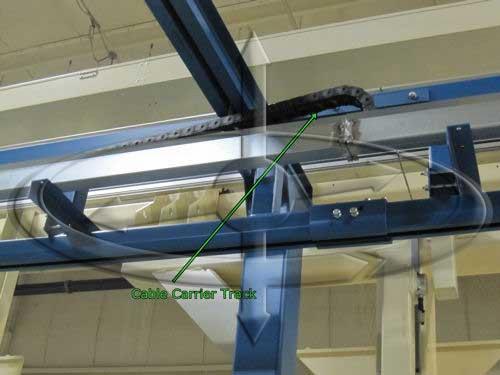

Click here for cross section of track PDF.
The question of how difficult the bridge movement would be in addition to the normal force required was calculated at a minimum amount. However in actual operation it turns out that the bridge operation is smoother and requires the same amount of force for bridge movement compared to a bridge with a typical air hose festoon over the same distance.I can also report that the bridge movement requires much less force than a bridge with collectors and a standard electrification. Because these cranes are so easy to move, a small amount of drag on one end can really cause fits with the operation of the bridge. We found no binding or hindrance of operation using the cable carrier system.
If you have any questions on this application, or need help with your own project, just give the Crane Doctor a call at 866-756-1200, or email at ebrown@engineeredlifting.com.
Recent news posts
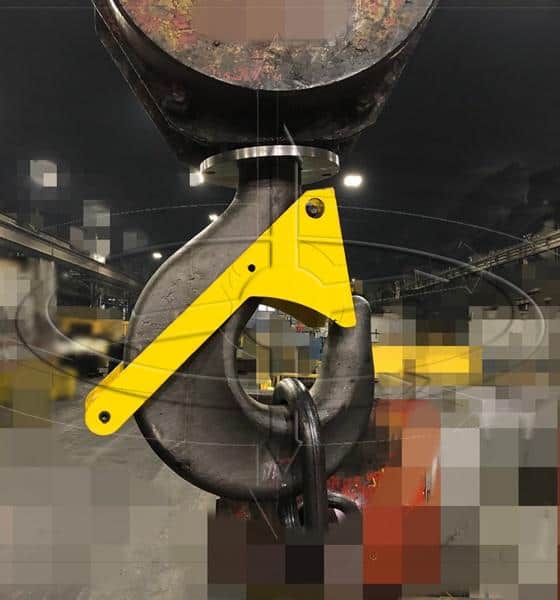
Gravity Latch with Rotation Lock
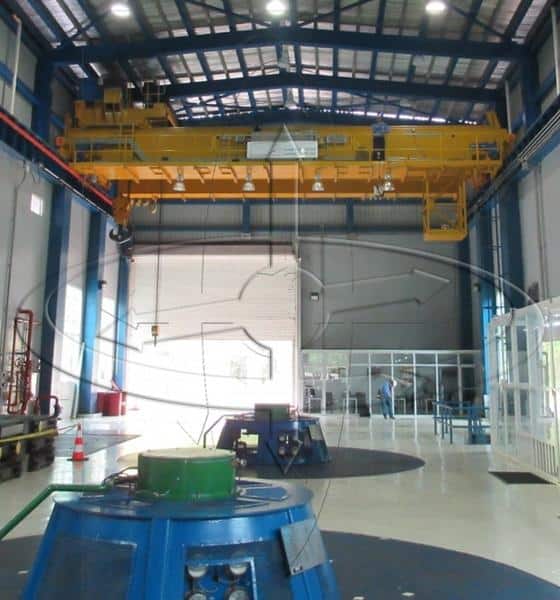
Magnetek Series 3 Drives Using “Motor 2” Option
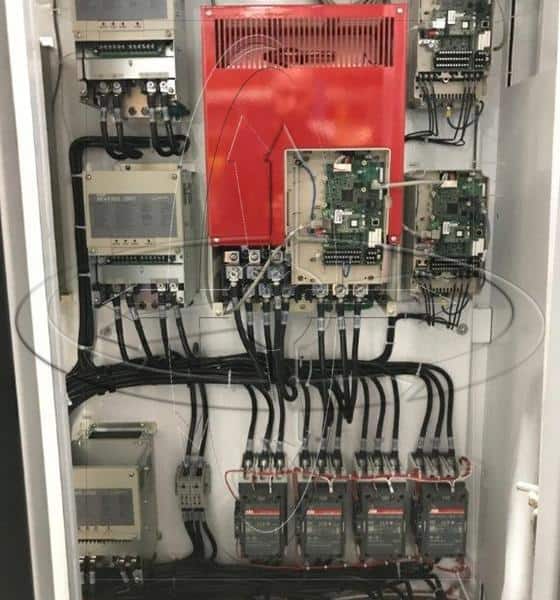
Magnetek Brake Circuit Fusing
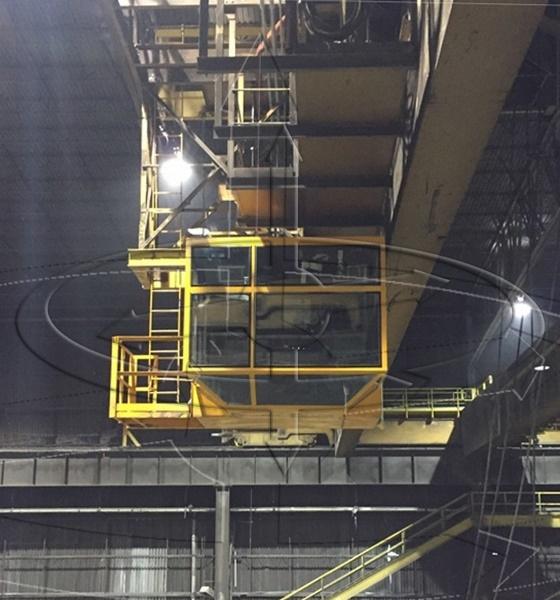
Crane Cab Replacement Improves Function
